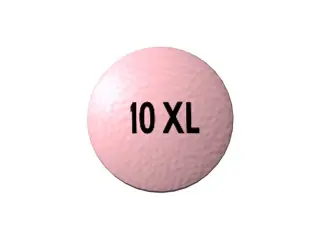| Package | Dosage | Price | Price per Dose | |
|---|---|---|---|---|
| Dosage: 2,5mg | ||||
| 240 pill | 2,5mg | NZD455.63 | NZD1.90 | |
| 120 pill | 2,5mg | NZD230.51 | NZD1.93 | |
| 90 pill | 2,5mg | NZD184.40 | NZD2.03 | |
| 60 pill | 2,5mg | NZD127.45 | NZD2.12 | |
| 30 pill | 2,5mg | NZD67.78 | NZD2.28 | |
| Dosage: 5mg | ||||
| 360 pill | 5mg | NZD1,209.62 | NZD3.36 | |
| 240 pill | 5mg | NZD819.06 | NZD3.42 | |
| 180 pill | 5mg | NZD629.21 | NZD3.50 | |
| 120 pill | 5mg | NZD428.50 | NZD3.58 | |
| 90 pill | 5mg | NZD336.29 | NZD3.74 | |
| 60 pill | 5mg | NZD235.94 | NZD3.93 | |
| 30 pill | 5mg | NZD127.45 | NZD4.20 | |
| 20 pill | 5mg | NZD89.48 | NZD4.50 | |
| 10 pill | 5mg | NZD48.79 | NZD4.83 | |

Oxybutynin Description
Overview of Oxybutynin
Oxybutynin is a well-known medication primarily used to treat symptoms of overactive bladder. It belongs to the class of antimuscarinic agents which work by relaxing the bladder muscles. This relaxation helps to reduce urinary urgency, frequency, and urge incontinence. Originally developed to manage bladder-related conditions, oxybutynin has become a common choice worldwide for patients seeking relief from these bothersome symptoms. Its effectiveness and safety profile make it a preferred medication in urology clinics and online pharmacies alike.
How Oxybutynin Works
The drug functions by blocking the action of acetylcholine on the muscarinic receptors in the bladder muscle. When these receptors are inhibited, the muscles do not contract as intensely or frequently. This action increases bladder capacity and reduces the urgency sensations that can lead to accidents. As a result, patients often experience a significant improvement in their quality of life. Oxybutynin is available in various forms including tablets, patches, and gels, offering flexibility to meet individual patient needs.
Advantages of Using Oxybutynin
Patients who use oxybutynin often report a noticeable decrease in the frequency of urination and reduction in accidental leaks. The medication can improve daily activity and sleep patterns by controlling symptoms that can be disruptive. Another benefit is the availability of different formulations, which can enhance adherence. The patch form, for example, provides a steady release of medication and reduces some common side effects such as dry mouth or constipation associated with oral forms. These factors contribute to the medication’s reputation as an effective and convenient option.
Considerations and Potential Side Effects
While oxybutynin is generally safe, it may cause side effects in some users. Common reactions include dry mouth, dizziness, constipation, and blurred vision. These effects are often mild and diminish after a few days of treatment. More rarely, some individuals may experience allergic reactions or intolerances. It is important to inform a healthcare provider about any pre-existing conditions or concurrent medications to avoid interactions. Proper dosage and adherence to medical advice are critical to minimizing adverse effects and achieving the desired therapeutic results.
Usage and Recommendations
This medication should be taken exactly as prescribed by a healthcare professional. Patients are usually advised to start with a low dose and gradually adjust as needed. The timing of doses may vary depending on the formulation used. For those using the patch, it is important to replace it regularly as per instructions. Regular follow-up is recommended to monitor the effectiveness and address any side effects. Patients should not discontinue use suddenly without consulting their doctor, as this can lead to a recurrence of symptoms.
Summary
Oxybutynin remains a prominent choice in managing overactive bladder symptoms. Its mechanism of action directly targets bladder muscle overactivity, offering significant symptom relief. The availability of different formulations increases user convenience and tolerability. Like all medications, it requires proper medical supervision to ensure safety and effectiveness. When used responsibly, oxybutynin can greatly improve urinary health and overall well-being for those affected by bladder control problems.

